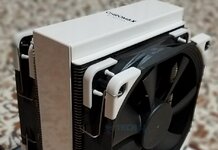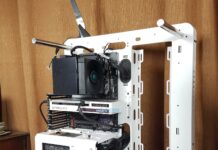Ideal For SFF Builds!
Review Summary
The ARCTIC P12 SLIM PWM PST are pocket-friendly competitive fans that are best suited for SFF builds where the space is restricted. They can be used for the case ventilation as well as on the radiator/heatsink. The slim design chews some of the thermal performance as compared to the non-slim version of P12 fans but the pricing, decent performance, and 6-year warranty make up for that.
Hours Tested: 4
Overall
-
Thermal performance - 8/10
8/10
-
Value - 9/10
9/10
-
Build Quality - 9/10
9/10
-
Noise Performance - 8.5/10
8.5/10
Pros
- Decent Performance
- Better Acoustic
- SLIM Design
- Cost-effective Cooling
Cons
- Not suitable for larger builds
- Not for maximum airflow and RGB lighting
- May not be optimal for those prioritizing thick fans for thermal performance
ARCTIC just launched a new set of fans – the P12 SLIM PWM PST. These fans are special because they’re super slim at 15mm, making them great for small builds like SFF builds. Unlike the standard 25mm thickness, these fans are thinner, saving space. You can get them in a single fan pack or a 3-fans pack. Big thumbs up to the ARCTIC design team for including custom-length screws, making it easy to install them on radiators. Excited to see how they perform? Let’s put them to the test!
- Why you can trust Tech4Gamers: Our reviews are based on dedicated hands-on testing by our team of experienced hardware experts. Find out more about how we test.
Key Takeaways
- ARCTIC P12 SLIM PWM PST fans are 15mm slim, budget-friendly cooling solutions designed for small form factor (SFF) builds, focusing on space-saving and easy installation.
- It is ideal for SFF build enthusiasts, budget-conscious consumers seeking cost-effective cooling, those who appreciate attention to detail, and users looking for a balance of performance, low noise, and a 6-year warranty.
- It is not suitable for larger builds, users prioritizing maximum airflow and RGB lighting, or those who don’t require slim fans and prioritize potential thermal performance with thicker fans.
Now let’s look at the specs.
| ARCTIC P12 SLIM | Specifications |
|---|---|
| Dimensions | 120 mm (L) x 120 mm (W) x 15 mm (H) |
| Weight | 85 g |
| Speed | 300–2100 rpm, 0 rpm <5% PWM |
| RPM Control | Pulsweitenmodulation – PWM |
| Static Pressure | 1.45 mmH2O |
| Airflow | 42.1 cfm [ 71.53 m³/h ] |
| Bearing | Fluid Dynamic Bearing |
| Cable Length | 400 mm |
| Connector | 4-Pin Connector + 4-Pin Socket |
| Current / Voltage | 0.12 A / 12 V |
| Starting Voltage | 5 V |
| Noise Level | 0.3 Sone |
| Ambient Operating Temperature | 0–40 °C |
Packaging and Unboxing
The fans are shipped inside a brown colour cardboard box with minimal packaging. There is an info label sticker on the pack showing the salient specifications and UPC/EAN labels.
Design
These fans are like the P12 series with 7 blades and a max speed of 2100 RPM. They have a wide RPM range of 300~2100 and use PST for consistent speed. The center has an ARCTIC sticker, but they’re non-RGB. No anti-vibration pads, and they’re 10mm thinner (120x120x15mm) than standard fans. The mounting holes are 105mm apart.
The fan has a strong black frame that’s 15mm thick. No arrows indicate blade spin or airflow direction. A 4-arm assembly at the back holds the motor and blades. The power rating and data are carved on the frame, not on a sticker in the center.
ARCTIC’s fans use advanced Fluid Dynamic Bearings with a special German-developed alloy/lubricant combo to reduce friction, generate less heat, and boost efficiency, extending the fan’s lifespan. The new fan motor is designed for low noise even at full speed, eliminates startup jerk, and minimizes vibration. No anti-vibration pads are needed on the corners due to the motor’s smooth operation. The fans come with a flat cable featuring a 4-pin PWM connector and a 4-pin socket, allowing users to easily connect and power multiple fans for consistent speed.
Testing
The following test bench is used for thermal performance testing:
- GIGABYTE Z690 AERO G
- Intel i7 12700k [4.8GHz, 1.190V]
- Raijintek SCYLA ELITE 360 DIY kit
- Sabrent Rocket 2x16GB DDR5
- GIGABYTE GeForce RTX 3060 VISION OC Rev 2
- Sabrent Rocket Q 500GB NVME SSD [For OS]
- Sabrent Rocket 4 Plus 2TB NVMe SSD [For Data]
- bequiet! Straight Power 11 850W Platinum PSU
- Thermaltake Core P6 TG Snow Edition in an open frame layout
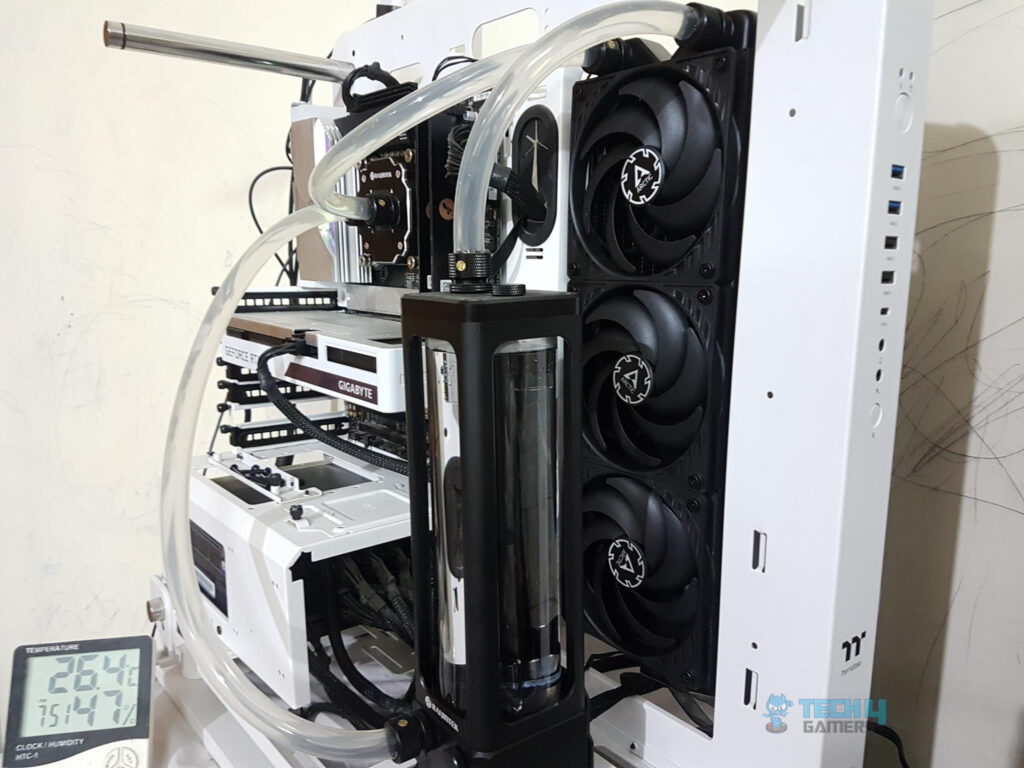
CINEBENCH R23 stresses the CPU for 20 minutes, followed by a 5-minute idle period to record the temperature. The graph shows the average maximum temperature of all P-cores. We compare fans: RAIJINTEK EOS 12 ADD RBW 120mm and SilverStone SF120, using Noctua NT-H1 thermal paste. Note that stress test results may vary due to factors like mounting pressure, thermal paste application, ambient temperature, and silicon differences. Mentioning testing methodology is essential.
Thermal Performance
There is roughly a difference of 2°C between the ARCTIC P12 SLIM PWM PST fans and the reference RAIJINTEK fans. The RAIJINTEK fans have much higher and better airflow and static pressure ratings. Despite that, these slim fans have performed quite well.
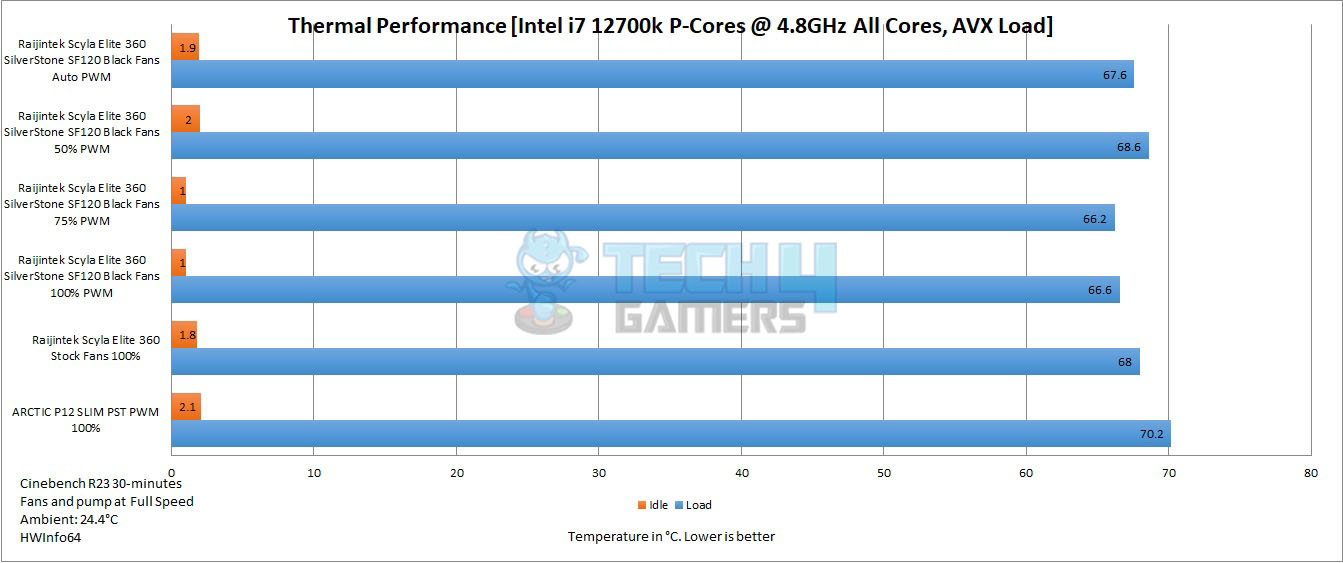
Airflow
We are raking the airflow reading by placing the instrument closer to the fan. The values would vary depending on the distance between the anemometer and the fan.
Here is a table showing the RPM range and corresponding airflow and speed measurements of the ARCTIC P12 SLIM PWM PST fan:
| PWM Duty Cycle (%age) | Speed (RPM) | Airflow (CFM) |
| 20 | 555 | 10 |
| 30 | 839 | 18 |
| 40 | 1123 | 25 |
| 50 | 1350 | 32 |
| 60 | 1530 | 37 |
| 70 | 1717 | 41 |
| 80 | 1869 | 43 |
| 90 | 2002 | 46 |
| 100 | 2129 | 47 |
Acoustics
We are not recording the noise output due to certain uncontrollable environmental noises. Based on our actual hearing, which is subjective, these fans don’t make a loud noise at full speed.
ARCTIC’s P12 SLIM PWM PST fans are budget-friendly and perfect for small, limited-space builds. These 15mm thick fans are ideal for SFF setups. They have a 120x120x15mm size, 7 blades, and a sturdy black frame. While lacking arrow indicators, they start at 300 RPM, reaching up to 2100 RPM, with a 5VDC starting voltage. Drawing 1.44W at 12VDC, they provide 42.1 CFM airflow and 1.45mmH₂O static pressure. The fans use Dynamic Fluid Bearings, a new motor design that reduces vibration and heat. Custom screws for radiator installation are included. With a 4-pin PWM connector and socket, they can be daisy-chained. Despite slightly lower thermal performance, they are quiet and have a generous 6-year warranty, making them great for SFF builds.
Recent Updates
- February 18, 2023: A few text changes to improve readability.Added image galleries.
Thank you! Please share your positive feedback. 🔋
How could we improve this post? Please Help us. 😔
[Hardware Reviewer & Editor]
Meet Nauman Siddique, a highly experienced computer science graduate with more than 15 years of knowledge in technology. Nauman is an expert in the field known for his deep understanding of computer hardware.
As a tech tester, insightful reviewer, and skilled hardware editor, Nauman carefully breaks down important parts like motherboards, graphics cards, processors, PC cases, CPU coolers, and more.
- 15+ years of PC Building Experience
- 10+ years of first-hand knowledge of technology
- 7+ years of doing in-depth testing of PC Hardware
- A motivated individual with a keen interest in tech testing from multiple angles.
- I majored in Computer Science with a Masters in Marketing
- Previously worked at eXputer, EnosTech, and Appuals.
- Completed Course in Computer Systems Specialization From Illinois Tech


 Threads
Threads
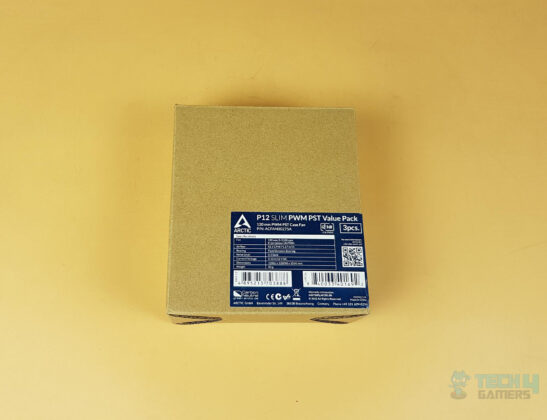
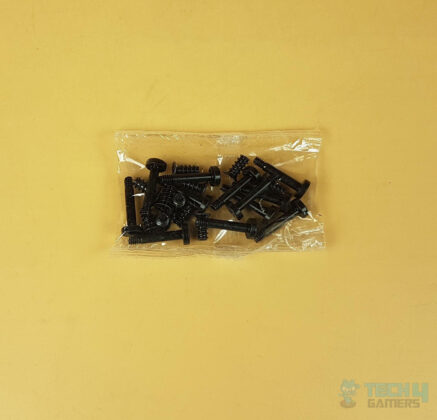

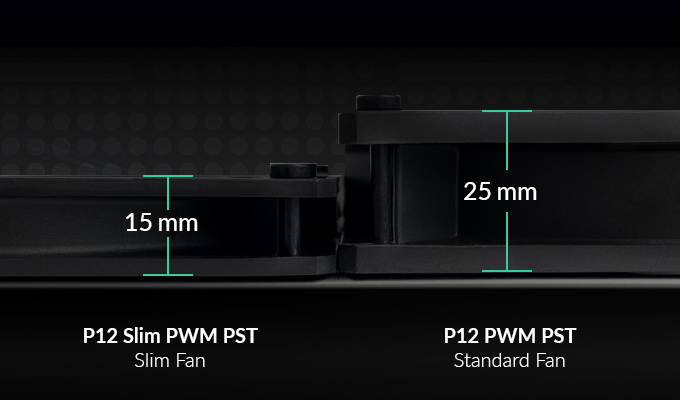
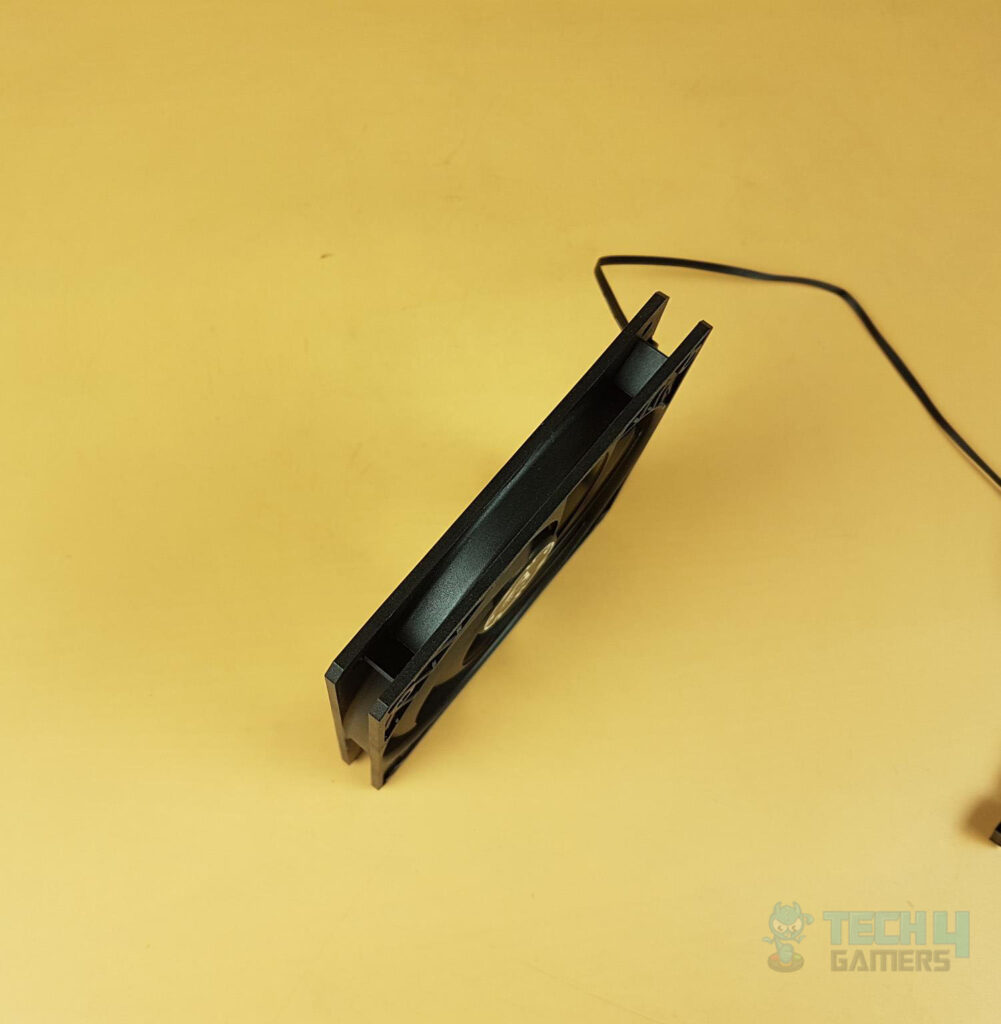
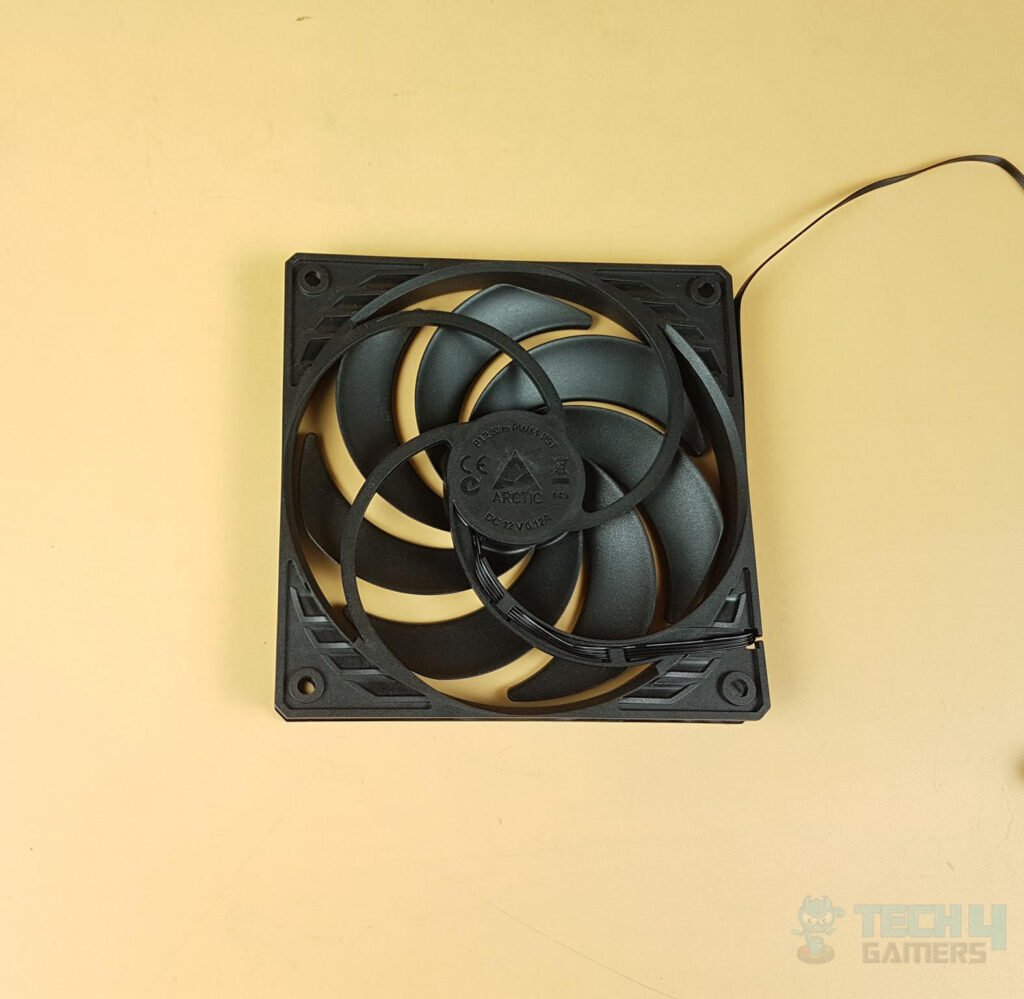
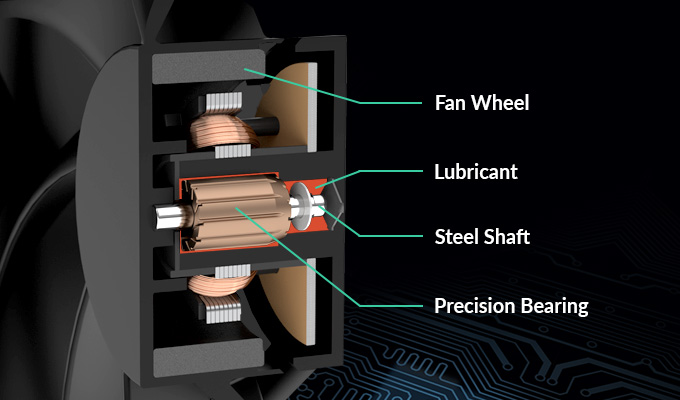
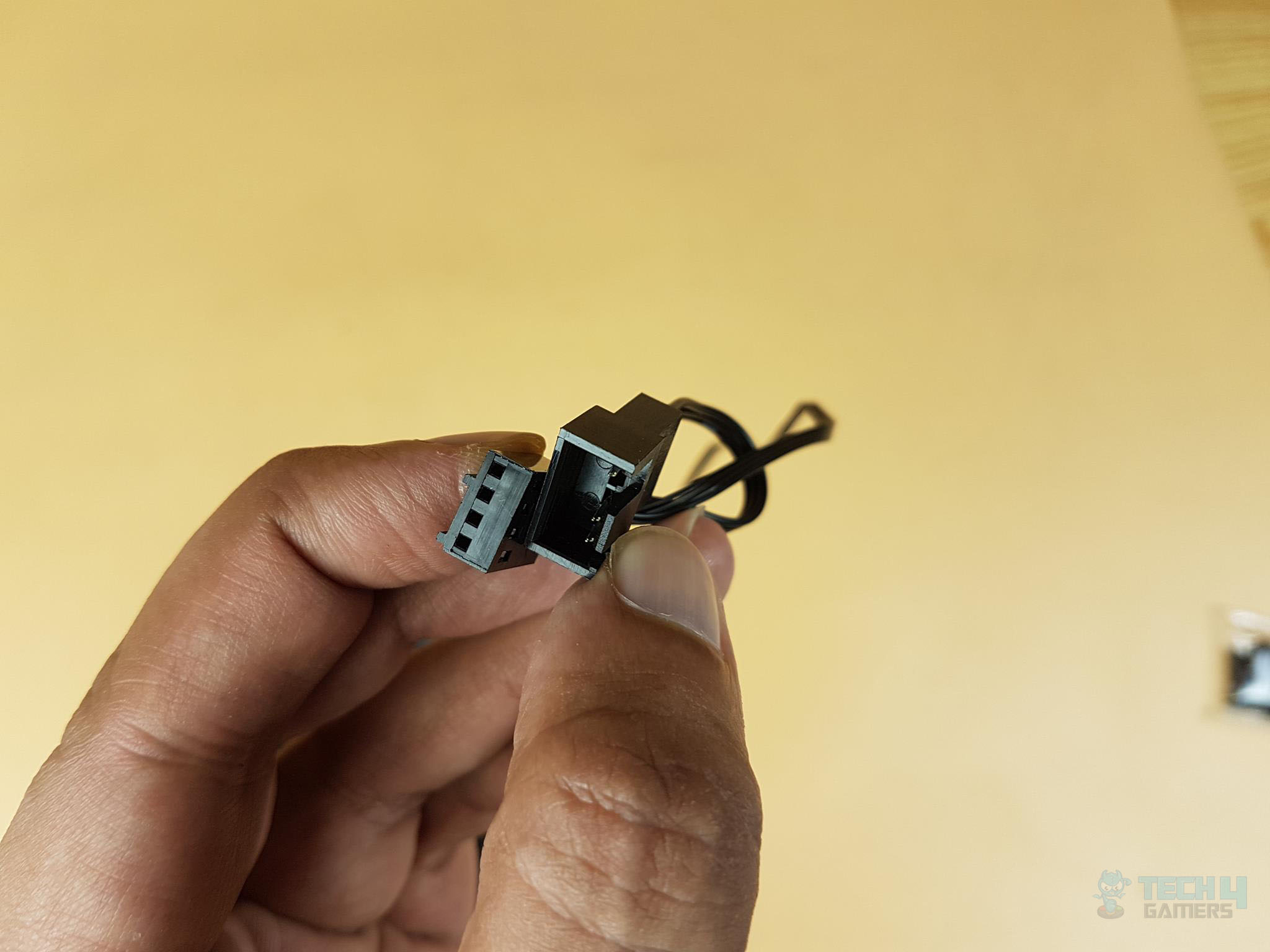

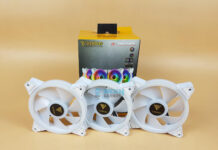
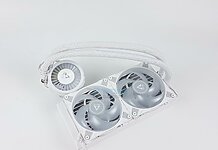
![6 Best CPU Coolers Under $100 [With Benchmarks] Best CPU Coolers Under $100](https://tech4gamers.com/wp-content/uploads/2022/06/Best-CPU-Coolers-Under-100-218x150.jpg)
